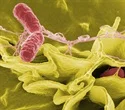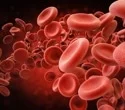There is no “normal” for the human brain or intellectual processes, according to recent theories. Despite the wide range of diagnostic standards for mental illness and psychiatric disorders, some philosophers contend that common disorders like dyslexia, affective and behavioral disorders, intellectual disability (ID), attention deficit hyperactivity disorder (ADHD), autism spectrum disorder (ASD), and ADHD are frequently overdiagnosed. The precise threshold at which human conduct deviates from the scientifically established norm and is deemed “abnormal” has not yet been established.
This way of thinking is influenced, in part, by the fact that many persons with mental or emotional issues also have strengths. For instance, social connections and language processing can be challenging for autistic people. Even yet, they are capable of astounding mathematical accomplishments, in-depth pattern recognition, and superior computer language and machine skills. When compared to verbal abilities, most ASD sufferers score higher on nonverbal cognitive tests.
ASD people on the ASD spectrum are now frequently chosen by many businesses for jobs like authoring computer manuals, managing databases, or finding faults in software because of this startling link.
Similar unusual skills have been described with dyslexia, like identifying ‘impossible objects’ or processing blurred pictures more efficiently than non-dyslexic peers. This is valuable in various fields, such as molecular biology, engineering, and computer graphics.
IDs like Down syndrome and Williams syndrome are associated with warm and outgoing personalities or musical abilities. Similarly, ADHD is associated with creativity and an adventurous spirit.
It is possible to assign specific roles of value to each of these traits in earlier societies, explaining why they were positively selected. For instance, ADHD traits could have promoted tool making, identifying hunting trails through exploring the environment, quickly recognizing and escaping or fending off danger, and finding food sources and safe places to stay in.
Therefore, neurodiversity should be assigned a due value in designing healthcare systems. An approach to the neurodiverse in healthcare based on recognizing strengths will go far in understanding the true worth of such individuals, treating them with respect and dignity, and providing opportunities for them to enrich the field of healthcare by playing to their strengths.





